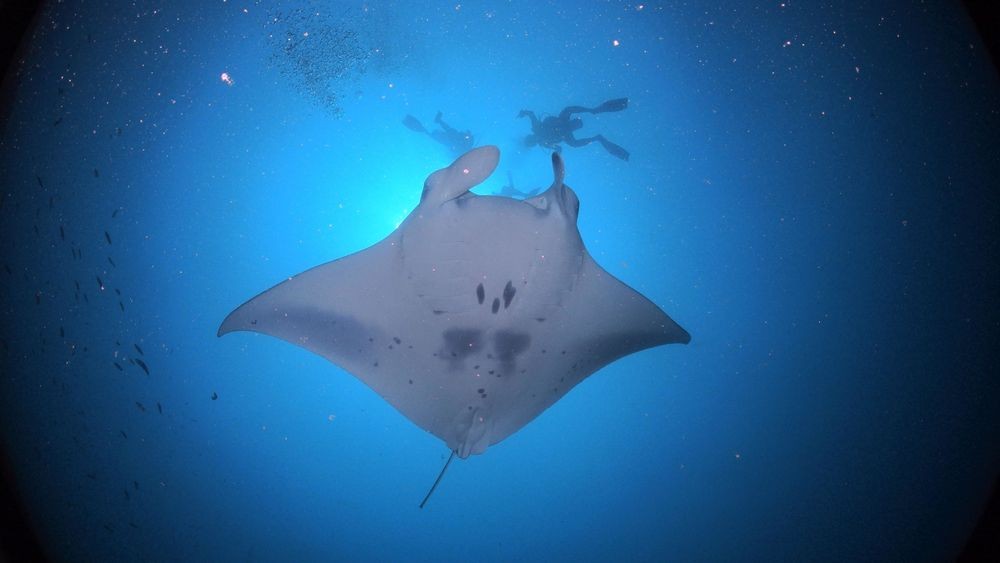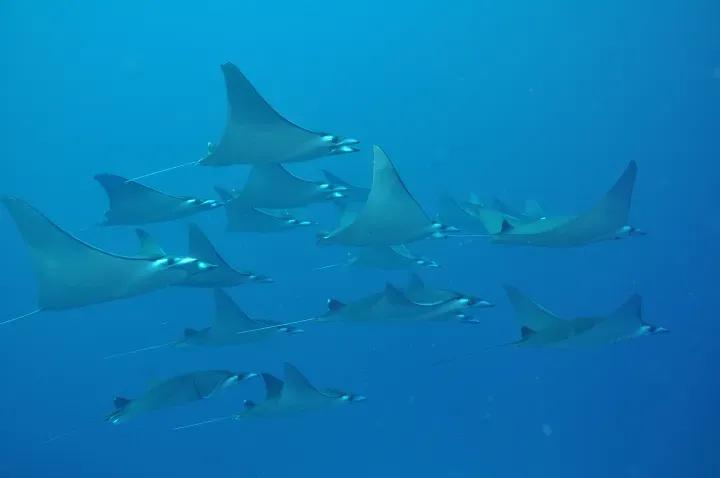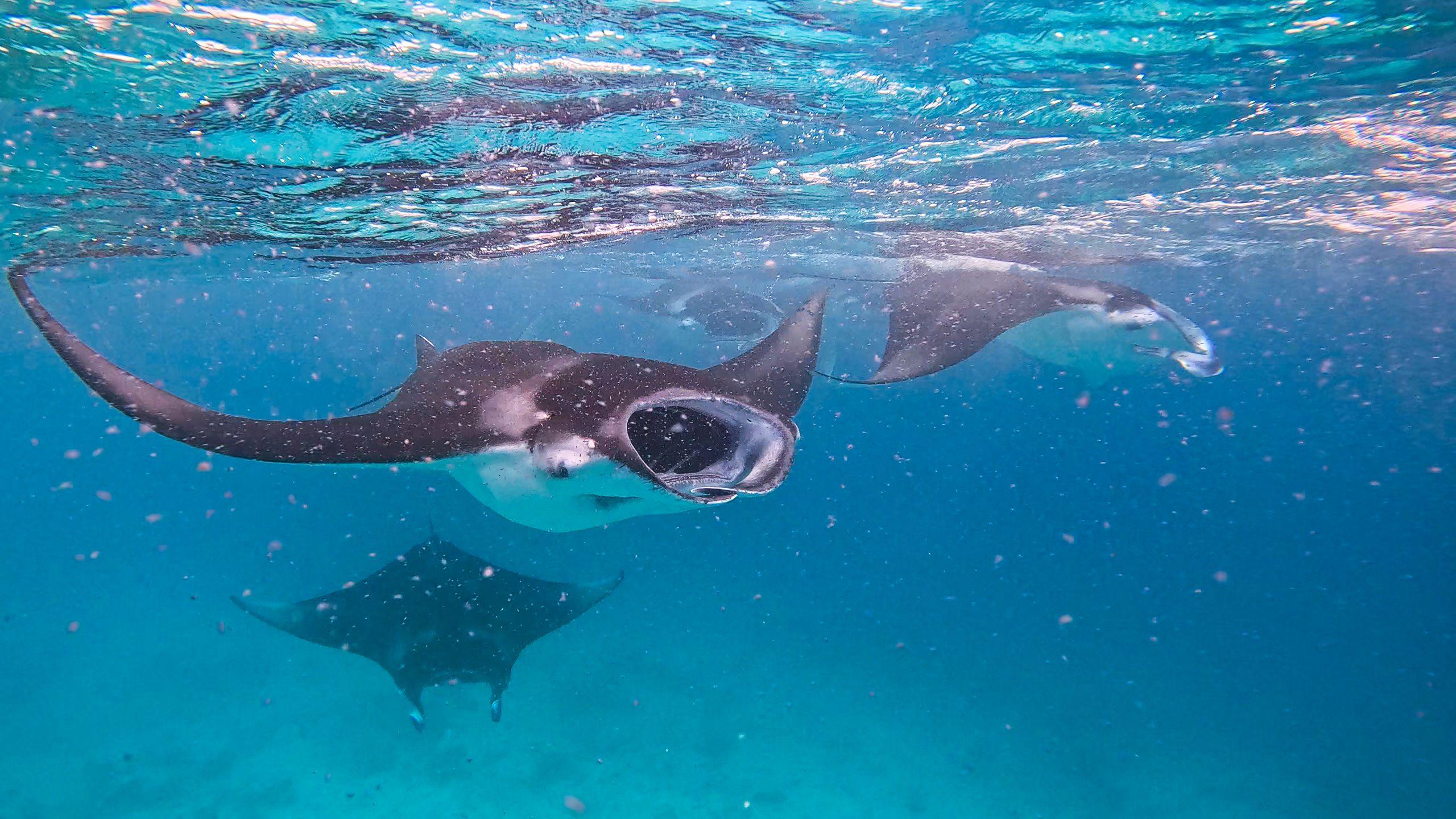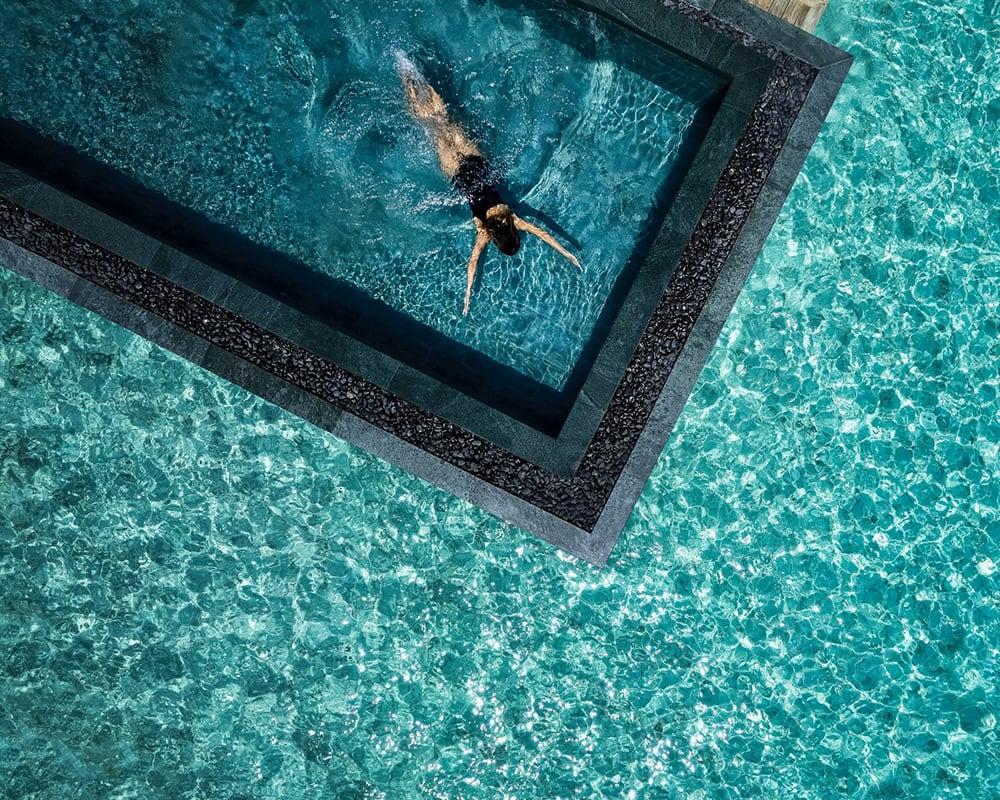
Inspiration
My First Time Manta Ray Snorkelling in the Maldives
In my imagination and from the photos I've seen on Instagram, I always thought manta rays were too similar to stingrays for me to care enough about seeing them.
They've been all over my Instagram feed, and I often disregarded them as overrated. Until …
I was invited to go on a manta ray excursion with my colleagues on a staff retreat to Dhigali Maldives, in September 2024.
My first thought: Do I want to get into the water with something that could sting me? (Quickly, I realized manta rays do not sting, that's stingrays. Totally different—mantas don't have stingers.)
Without overthinking it further, I agreed to go. First, we collected the snorkelling equipment from the watersports centre. The following day, we set off from Dhigali Maldives, to Manta Point, approximately 15 minutes from the island.
Two experienced watersports guides and our speedboat captain joined my four colleagues and me.
Don't wanna read the whole article?
Here are the Key Takeaways from my First Time Snorkelling with Manta Rays:
- If this is your first time snorkelling with manta rays, choose a reputable watersports/excursions provider. Their experience and safety instructions are invaluable.
- Take an underwater camera such as a GoPro with you. The shots you capture will not disappoint!
- Remember to clean your snorkelling gear (mask) with soap before getting in the water for better visibility.
- Do not touch the manta rays. Their "Mucus Coating" is a barrier protecting their immune system. Always maintain a safe distance!
- It is not a scary experience if you know how to swim. Enjoy it!
To be honest, I was sceptical we'd even see manta rays. However, this was Raa Atoll, and right next to it is Baa Atoll—where the world's largest aggregation of manta rays occurs. So, you could say Raa Atoll is the spot to choose if you want fewer crowds during the excursion. Besides, manta rays can spotted in Raa Atoll all year round.
During the trip, our guide briefed us on what to expect. He advised us:
- STRICTLY not to touch the manta rays
- Signal the watersports guides if you're uncomfortable in the water
- How to properly wear our fins and masks
- How to navigate the waters in a line
Our guide made it clear: no matter how close the gentle manta rays get, do not touch them. And believe me, these creatures do get pretty close to you.

Finally, everyone got in the water. I was third-to-last, followed by one of the guides, who jumped along with safety buoys. He reassured me that if I needed help, he was right behind me. The water wasn't exceptionally calm, but it was manageable.
As I started following the leading group from a little behind, I looked to my right—and suddenly, I felt calm. It wasn't a thrill or fear. I just felt an overwhelming sense of calm (and, yes, my eyes widened).
Slowly flapping its wings and gliding through the water, a giant, enormous manta ray came into view. I finally understood why they're called majestic.
I've encountered fish, sharks, stingrays, and turtles before, but nothing surprised me as much. The sheer size of the manta ray was far greater than I had expected—I was so used to seeing the baby stingrays in lagoons.
And that was just the beginning. I turned slightly toward the boat, lagging behind the group, thinking I'd catch up after catching my breath (urban life had made me reasonably unfit for the sea). Before I could turn, two, three, four, five, six, seven—EIGHT! I lost count of the Manta Rays in my view.
I no longer wanted to return to the boat. I just floated there, observing them. I noticed the watersports guides weren't far from me, which reassured me.
Oh, and I did spot a little turtle—it was cute. But no offence to the turtles out there; the beauty of manta rays is in a league of its own.
Eventually, I got back on the boat to catch my breath. The team had moved ahead, so the boat captain drove closer so I could rejoin them.
The coordination between the guides was impressive. They checked on us every ten minutes—not annoyingly, but just enough to feel cared for.
The guides instructed us beforehand to use hand signals to indicate whether we were okay or needed help.
Again, it was time for me to jump back in, and the experience was even more surreal this time. These majestic creatures surrounded me. Is this one bigger? Is that one swimming upside down?

I initially wanted to keep track of the manta rays I saw so that I could tell my colleagues how many I saw. But there was no way I could keep count anymore.
Their movement was unique—they weren't fast. They seemed to glide as though they slowed down a hundred times.
Everyone else seemed to be enjoying themselves as well. The only complaint was when our time was up. I don't think anyone could get enough of this!
One of the best parts of this excursion was having the entire area to ourselves. So I gotta hand it to Raa Atoll—it might might be the more private alternative to Baa Atoll for manta ray snorkelling.
I went into this excursion thinking we might not even see a manta ray. But I was so wrong. The sheer number of them completely blew me away.
After we wrapped up and returned to the boat, we enjoyed refreshing cold drinks as we returned to the resort.
My advice? If you know how to swim, do it. With the proper guides, you'll be fine. These gentle creatures won't attack you—they're one of the most incredible ocean animals I've ever observed up close.
